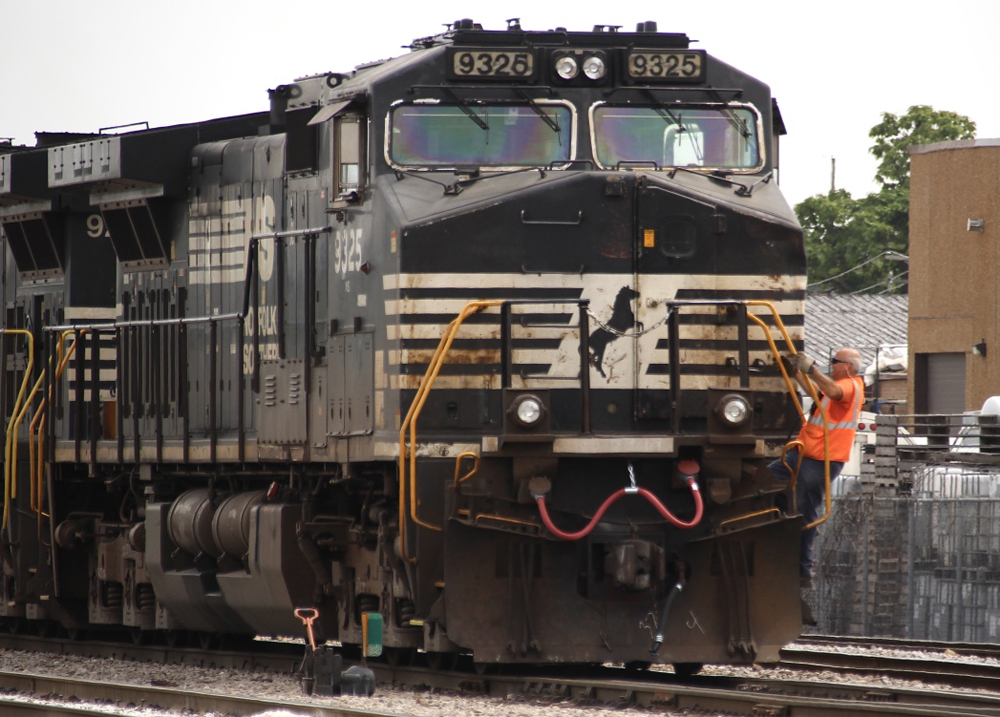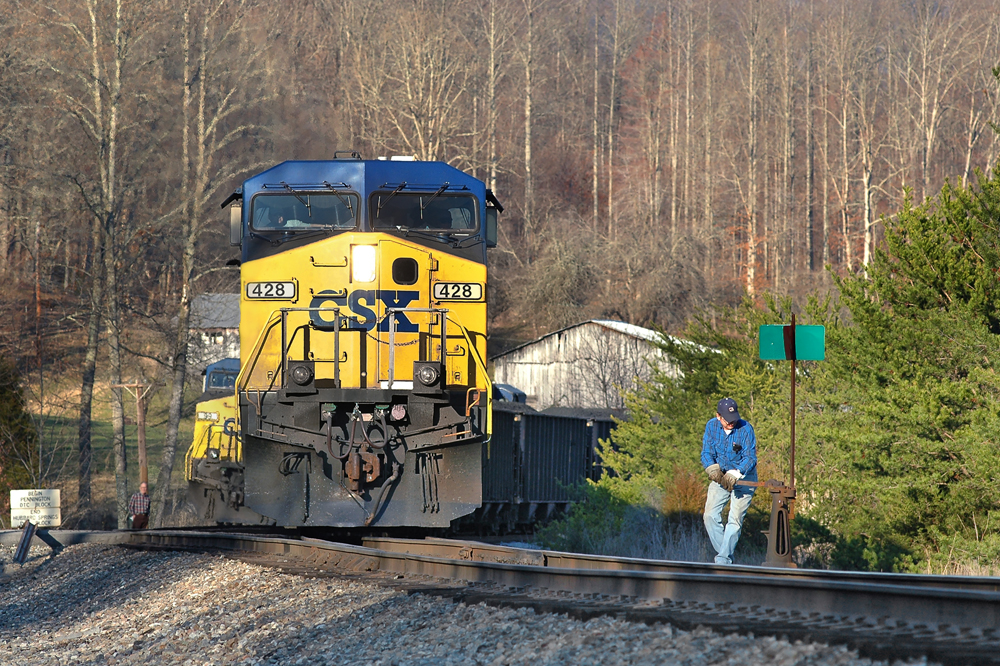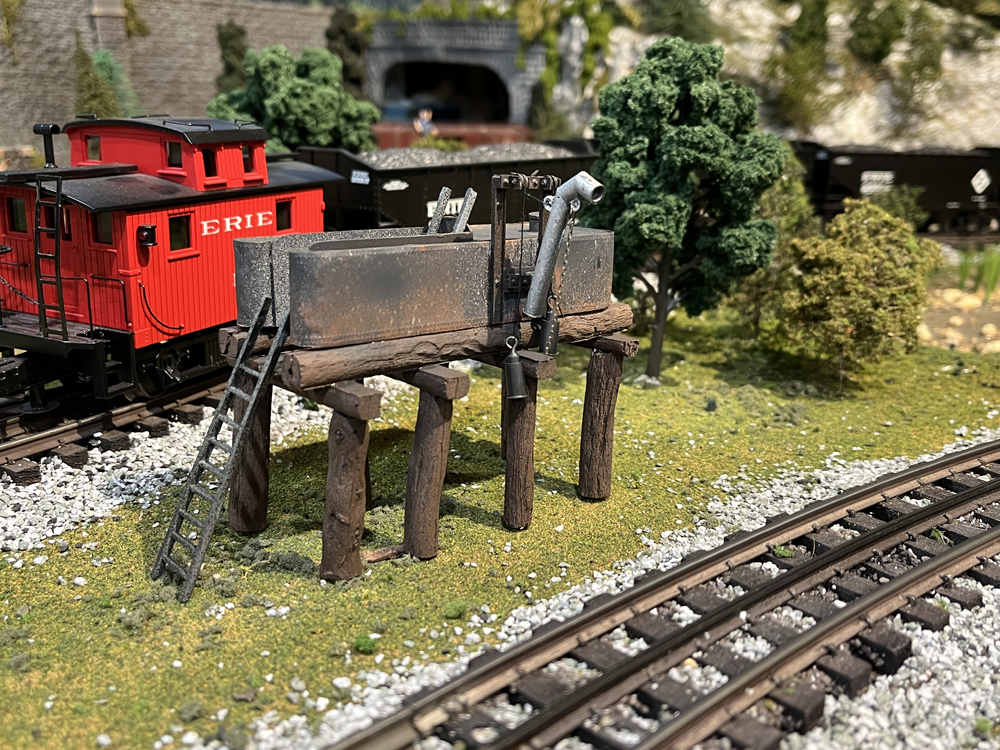
At the onset of the pandemic in 2020, Class I railroads furloughed train crews as volume sank at its fastest rate ever.
When volume rebounded, crew members were not called back to work at the same rate as traffic returned because railroads were moving their tonnage on fewer but longer trains.
Then three things happened that put railroads in a bind. Furloughed conductors found work elsewhere. Train and engine crews quit or retired at higher rates than usual. And an extremely tight job market made it difficult for railroads to recruit and hire conductor trainees.
The result has been widespread crew shortages, particularly in the East where CSX Transportation and Norfolk Southern service has suffered.
Railroads are caught up in broader trends in the labor force amid a wave of workers who are retiring or finding better jobs. A record number of Americans left their jobs this year in what’s been called the Great Resignation, a phenomenon spurred on in part by the pandemic. Simply put, there are more job openings than job candidates.
“No way did I or anybody else in the last six months realize how difficult it was going to be to try and get people to come to work these days. It is an enormous challenge for us to go out and to find people that want to be conductors on the railroad, just like it’s hard to find people who want to be baristas or anything else,” Foote said on CSX’s July 21 earnings call. “It’s very, very difficult.”
A few months later NS executives faced the same challenges.
“Norfolk Southern is a great place to work,” Chief Financial Officer Mark George says, citing high pay and good benefits.
“But it’s an outdoor sport,” he notes, making it harder for railroads to compete for workers.
“People have a lot of options, and what we’re finding is that people are really making decisions to leave or not to join … largely based on lifestyle,” George told an investor conference.
When seeking conductors, NS now finds itself in competition with Amazon warehouses, trucking, and housing construction jobs. “In this post-COVID world, people are choosing different ways to live their life, and work-life balance is part of that. So that’s really what we’re dealing with,” George says.

Both railroads are hiring as fast as they can and said they likely wouldn’t be fully staffed until sometime in the first quarter of 2022. CSX and NS were offering incentives to current train and engine crews as well as new hires.
“We recognize our current service levels do not meet our customers’ or our expectations. We also understand the critical role we play in supporting our customers’ business plans and the national economy,” NS President Alan Shaw wrote in a December letter to Surface Transportation Board Chairman Martin J. Oberman. “We are in business to provide an efficient, reliable transportation service and we are highly motivated to restore the level of service our customers expect and handle higher volumes of their freight.”
Foote told Oberman that CSX’s service was not where he’d like it to be. “On the carload side of our business, CSX continues to work towards the goal of delivering our customer freight in the most efficient and reliable manner,” Foote wrote.
Oberman pins some of the blame for crew shortages on job cuts at Class I railroads, which have shed 25% of the workforce over the past few years. “Now the railroads tell us they’re working mightily to hire more staff, and they’re finding it difficult to do so,” he told the RailTrends 2021 conference in November.
Oberman acknowledges that railroads are facing the same labor market pressures as every industry.
“But to the railroads there’s another factor causing the problem in finding enough people,” he says. “I don’t think it’s a mystery that working conditions on many of the Class Is have become unacceptable for too many who have chosen to abandon their railroad jobs, in many cases in mid-career even when it’s caused them to forgo their pensions that they may have spent years accumulating.”
Additional News Wire reading:
“NS, CN, and KCS are hiring conductors to meet rising traffic demand,” June 22, 2021.
“As volume rises, CSX feels pinch from crew attrition, tight job market,” Aug. 5, 2021.
“Norfolk Southern service deteriorates amid crew shortages,” Nov. 15, 2021.
“Norfolk Southern reports record earnings, but crew shortages affect service levels,” Oct. 27. 2021.
“Train crew shortages spread to short lines,” Nov. 23, 2021.
Coming Dec. 27: Top 10 stories Nos. 5 and 6.
Previously:
News Wire Top 10: The runners up.
News Wire Top 10, No. 9 (tie): The STB and Wall Street.
News Wire Top 10, No. 9 (tie): Amtrak sidelines equipment, turns away revenue.
News Wire Top 10, No. 8: Climate challenges.









Interesting that Foote of CSX put a train conductor on equal footing with a barista.
Agree with what’s already posted.
I’ve heard many tales of bad supervision. And how it flows downhill.
The railroads shot themselves in the foot (again). They haven’t learned from the 100 times before when they laid off everyone they could until the trains stopped running.
Too many firms have treated their employees like dirt for a long time, and typically, the same firms underpay as well. People eventually reach their limit of what they can take, and if they can, they retire or find something better. At the same time, in some firms, execs are paid many times more than those doing the work. It’s in any industry – greed, and treating employees like highly disposable ‘resources’ – hence where the term HR originates. Employees, toilet paper, garbage cans, etc. All disposable, all available somewhere else. Though COVID made a mess of this type of thinking, it doesn’t mean that all companies out there learned from it.
Some weeks ago, a local newspaper by me had 2 articles that caught my attention. In the first, a local firm was talking about how they didn’t have enough jobs for all the people they could hire. They picked people with certain types of disabilities who were normally seen as unemployable but actually very trainable and happy to be working at a firm that cared about them. 2nd article – a local school district whining how they couldn’t get enough food service workers. Well, if you treat your workers like c–p, and pay them that way…
Railroad work can be hard, painful and uncomfortable. Railroads have to not just pay well enough, but make their employees feel valued, and do what they can to make the jobs easier and safer. And listen to them. Don’t run them into the ground they way so many had beat up on their rolling stock and infrastructure for decades.
I called crews on the Northern Pacific in 1969-1970 at Northtown Yard in Minneapolis. The NP would not hire any brakemen/yardmen due to impending BN merger. We were always short of people. There was an NP freight train between Northtown and Brainerd, MN running six days a week. One crew was assigned to Monday, Wednesday, and Friday. The other crew was assigned Tuesday, Thursday, and Saturday. I was short two brakemen. The trainmaster called Labor Relations and got two x- brakemen for the train (they were exempt employees). Not much fun to always be begging for people to work. I bid off the job as soon as I could.
Ed Burns
NP BN BNSF 1966-2004
There was a windstorm in my area the week before last. It didn’t affect my house but the west side Waukesha (Wisconsin) neighborhood where Habitat for Humanity of Waukesha County is building homes was “dark”. We had no heat or light the entire work day. Not just all day, I heard that the outage was all the previous night.
One of the Habitat volunteers is a We Energies retiree. He said the utility is always short of crews, that retirees aren’t replaced. This is a utility with a “good” reputation. Imagine the ones with less credibility.